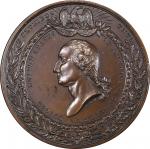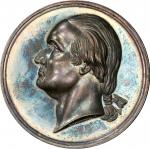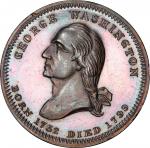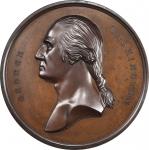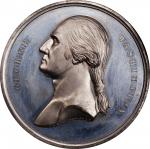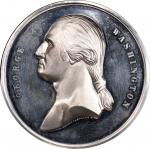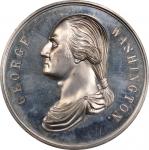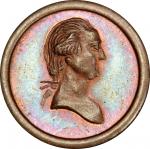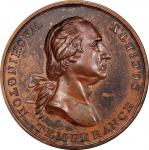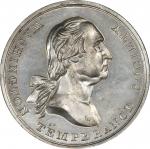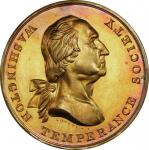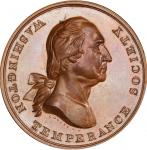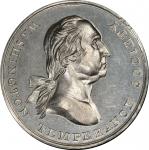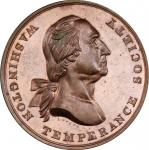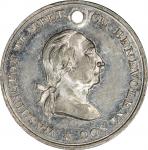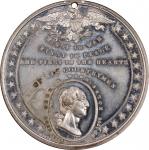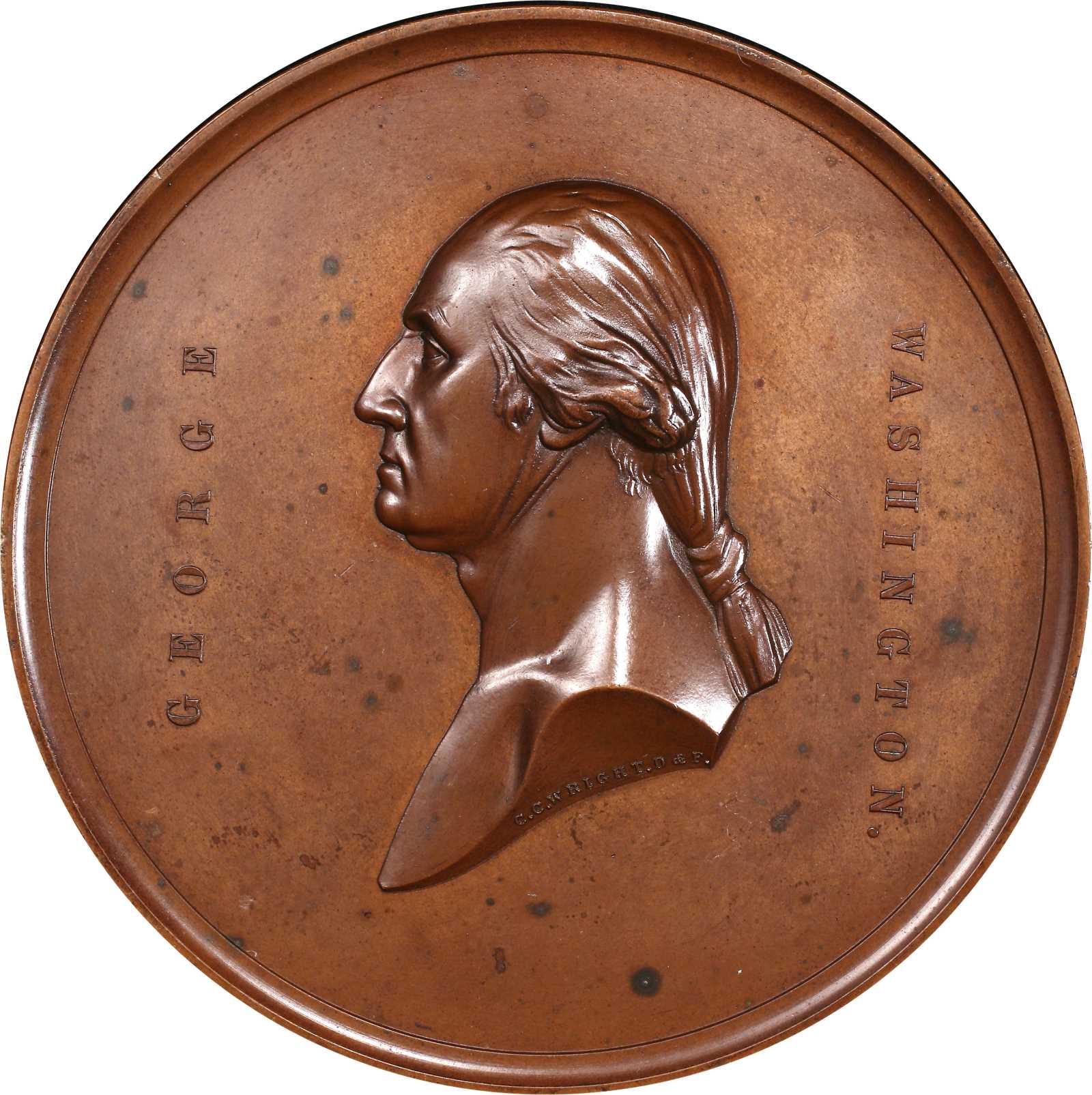Circa 1851 Declaration of Independence Signing Ceremony medal by Charles Cushing Wright. Musante GW-181, Baker-53. Bronze. SP-63 (PCGS).90.8 mm. 5879.5 grains. Light olive brown with gentle mottling on the obverse. Traces of subtle blue and rose are seen in the reflective fields when the medal is turned in the light. A sprinkling of shallow spots are noted on the obverse, and though they tend to catch the eye, they appear stable and are of little consequence otherwise. Handling marks are few and trivial. The reverse is light chocolate brown, satiny and very uniform, this being the apparent "down side" in Bakers cabinet and thus better protected. There are no handling marks or spots on this side worthy of mention. From a more technical standpoint, there is faint evidence of double striking which one must expect on a medal of this immense size. A thin die break passes through the center of the die from the upper left flag downward to the right, terminating in the tome on the desk.
Every opportunity we have had to hold an example of this work of medallic art elicits the same response, an undeniable degree of awe. Its execution speaks to the talented hand behind it, and its substantial size is most impressive. That which we identify as the obverse is thoughtfully laid out to memorialize Washington, without distraction. His portrait, masterfully executed by Wright after the famous Houdon Bust, is positioned in a broad plain field with only the letters of his name punched at left and right. Wrights signature is on the truncation, C.C. WRIGHT. D&F. The reverse depicts the scene of the Signing of the Declaration of Independence made famous by John Trumbulls painting, so titled. The design of the medal was based directly on the painting, but whether Wright worked from the painting or a later engraving of it is unknown. Such an engraving by Wrights talented friend Asher B. Durand is given by Musante as a good candidate for the actual source that Wright might have used in his studio as he laboriously laid out and cut the intricacies of this design. It is said that it took him two years to complete the dies for this medal, and that just ten examples were struck from them.
The earliest appearance of one of these medals we are aware of was in the February 1859 Augustus B. Sage sale of the Henry Bogert Collection, where it was commented that "this is undoubtedly, the finest medal ever cut in this country." It sold for $8 to Henry Whitmore. Sage bought it himself in the Whitmore sale, in November of that year, for $10. The Finotti specimen sold for $21 in November 1862. In March 1863 Heman Ely bought his for $25 in a Woodward sale. John McCoys went to Mendes Cohen in 1864 for $30, and William Sumner Appleton paid $25 for his in the June 1864 Strobridge sale, which undoubtedly is in residence at the Massachusetts Historical Society today. Sages commentary seems to have been widely agreed upon, as these were substantial sums at the time. In 1890, when the R. Coulton Davis specimen sold, it brought $20 which, though lower than records from decades earlier, was still more than was realized for a C.C.A.U.S. medal in the same sale.
The aforementioned reverse die crack likely had something to do with the small number of medals struck. It was stated in 1856 that just ten medals were produced, and there is a decent chance that this is true.<p><p>We are aware of the following struck originals today:<p><p><strong>1. The Rulau-Fuld Plate;</strong> Charles Wharton Collection<p><strong>2. The Norweb specimen</strong><p><strong>3. Mabel Brady Garvin; </strong>Yale; New Netherlands; George Fuld; Richard Picker; Gilbert Steinberg<p><strong>4. Stanley Scott</strong><p><strong>5. Richard Picker; </strong>Lucien LaRiviere<p><strong>6. Historical Society of Pennsylvania</strong> (the present piece)<p><strong>7. George F. Seavey;</strong> William Sumner Appleton; Massachusetts Historical Society.<p><strong>8. F.C.C Boyd;</strong> John J. Ford, Jr.<p><strong>9. Thomas Warner</strong> (S.H. & H. Chapman, June 1884, lot 2142)<p><p>The small number of pieces made did not dissuade collectors or lessen their desire for these fine works, and it seems that high-quality electrotypes were probably made starting very early on to fill the demand. In the 1859 Bogert sale, there was an electrotype of the Signing Ceremony / Discovery of America medal (GW-183). Though we have not seen appearances of electrotypes of this medal from that period, it stands to reason that they might have been produced if the other type was already being made.<p><p>Whatever the case with the electrotypes, the original struck pieces have been among the most highly prized Washington medals from very shortly after their genesis. With so few available, only the finest collections tend to have them, and even some spectacular holdings such as the Garrett Collection did not. They are very rarely seen and this one from the Historical Society of Pennsylvania is therefore an important opportunity. A note with this medal indicates that it was not part of the Baker bequest.<p>Ex Historical Society of Pennsylvania.





